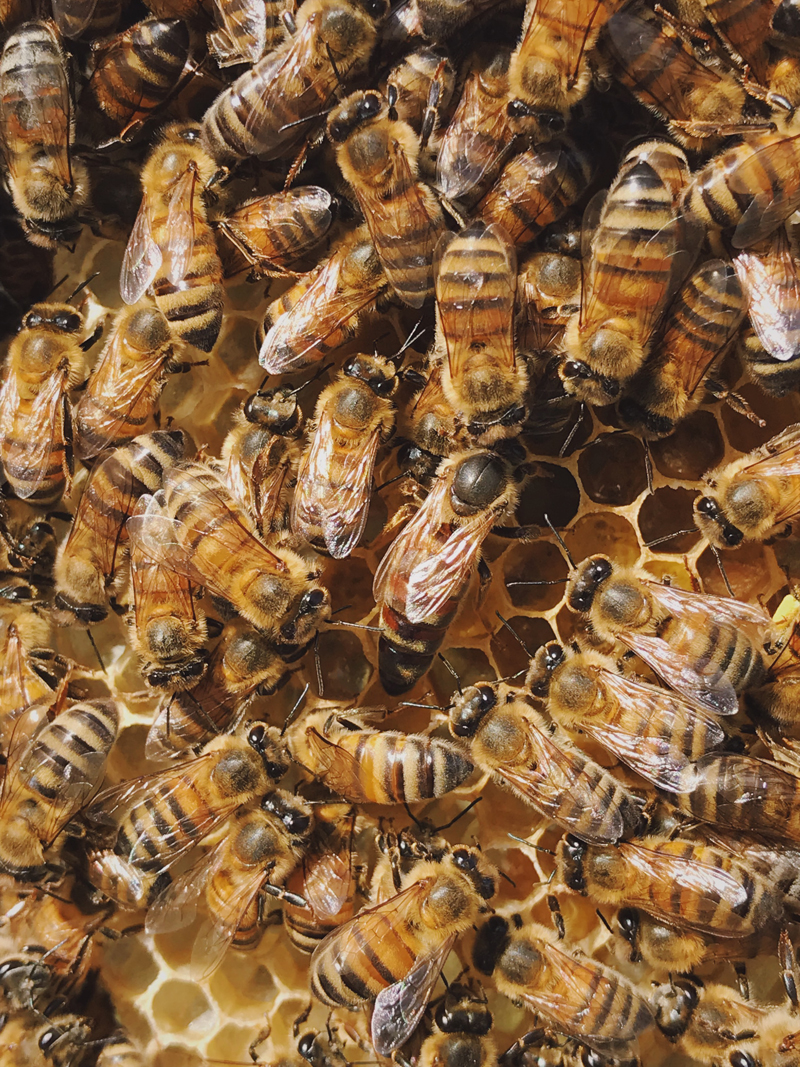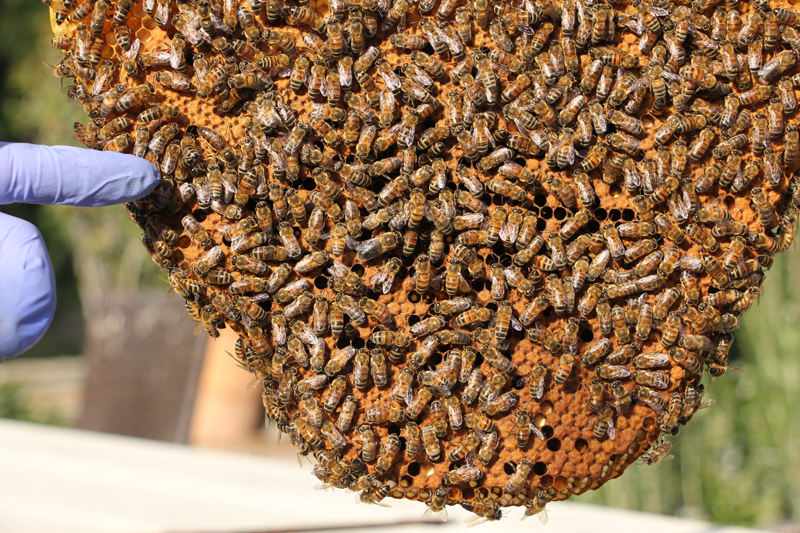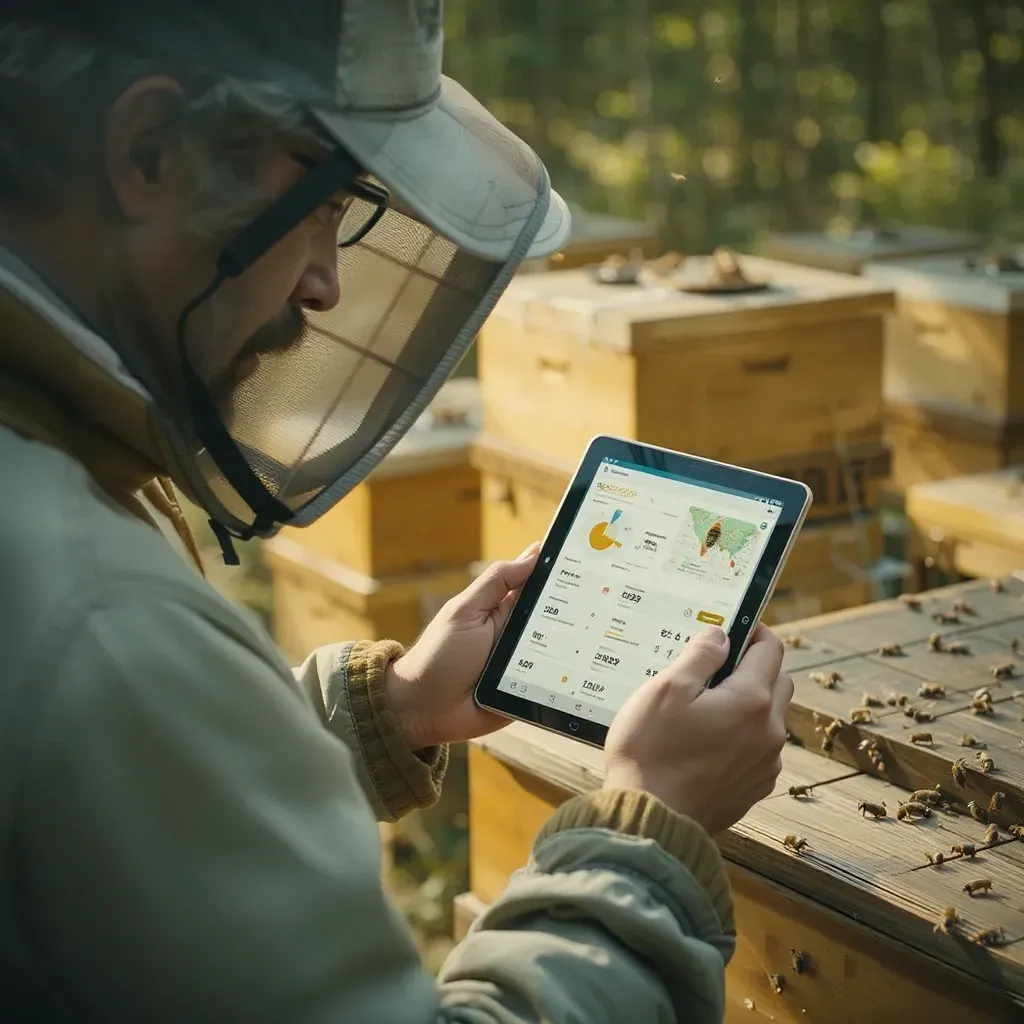FINDING THE QUEEN BEE
New beekeepers often think that finding the queen is the most difficult part of beekeeping. It can take a lot of practice to become an effective queen finder, especially if you have little experience.
While you don't always need to search for the queen, there are instances where it is necessary to do so. Let's take a look at why you might find yourself searching.
Always Look for the Queen
While you can confirm the presence of your queen in the hive by looking for eggs, you should always scan the frames you are handling for the queen. If you are holding a frame that has the queen on it and you aren’t aware, you could easily harm your queen.
She may slide out of place and the rollers might not hold her in place.

Adding the Queen Excluder
When you want to build more comb in your hive, you often move a few frames up from the boxes below. While this does make room for more comb in the upper boxes, it can also cause problems if you also have a queen excluder in place.
If you move frames up, and you aren't skilled at spotting your queen, you could end up moving her above the queen excluder and then you'll end up with brood where you want your honey to be.
What if Swarm Cells found
Beekeepers destroy swarm cells when they find them hoping to prevent swarming, but if the swarm cells are well developed, there is a chance your colony has already swarmed. If this is the case, you will render your colony queenless when you destroy the cells.
If you find a queen in a box of bees, leave the queen alone and don't try to move her. There's no reason to remove a queen who isn't there. But in the event, she is missing, or you find your queen in the hive and can't get her out, it is possible to force her out. This is a simple procedure called queen removal.
If you find a queen bee, then it is safe to assume the colony has not yet swarmed and they have not yet produced drones to mate with the queen. The best way to deal with this situation is to kill the queen. This ensures no drones will fertilize her eggs, and if the queen is killed then the hive is doomed.

Hive Observation
A lot of beekeeping is about learning how to properly observe the bees without having to worry about whether or not the bees are bothering you. Observing the behavior of your bees will allow you to more effectively communicate with other beekeepers and better help your hive. It will also help you learn how to properly treat your colony and know when they are sick.
Depending on the style of an observation hive and the type of event you are doing, you may or may not want to include the queen. There is a lot to be said for leaving the queen safe in the hive when using a smaller, portable observation hive, but there are many large, semi-permanent observation hives that can be made suitable for housing a queen. Either way, you'll have to decide when you make this choice, but it's important to consider the queen when deciding whether or not to include her in the observation.

Requeening
Your queen needs to be re-introduced into your colony every single time. The reason for this is that she won't be able to establish a hive unless she is introduced to it. This happens after 7 days of waiting when the queen is introduced to your colony and then is checked over by a beekeeper before you are allowed to release your bees back into the wild.
Many beekeepers skip this second spotting of the queen and end up with the daughter of the queen they had before. Some colonies, especially defensive ones, will kill the queen you install in favor of raising another from the eggs of their previous queen.
It is common for a new queen to have an unfriendly personality during her first days in the hive; however, you do not want to remove the new queen because if your new queen is aggressive to other bees, then it could hurt her or even cause her to sting them. You need to be sure that your new queen has been accepted by the colony.
Hook for Fun
One of the benefits of beekeeping is watching your bees produce honey. You'll also get to see them raise a new generation of bees. It's a bit like raising children in a way – they keep you busy as well as keeping your spirits up.
It's wonderful to be able to point out a queen bee to kids and adults who have never seen one before.
How To Find the Queen Bee
Finding a bee’s queen is no easy task, and beekeepers often give up on this task. However, you can use some simple methods to help you learn how to identify a queen. The first step to finding your queen bee is to check for two characteristics. First, she should have long, thin legs and a smaller head than the rest of the bees. Second, she should be at least a little larger than the rest of the bees in the hive.
A honey bee doesn't move quickly, so you probably won't be able to tell if a worker bee is a queen just by watching her walk. You may not even see her at all. If you are lucky, she will leave clues as to her gender, such as a particular pattern on her back.

